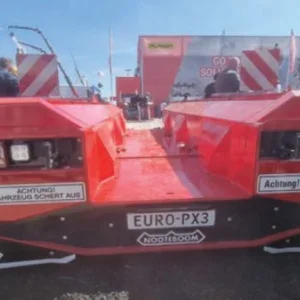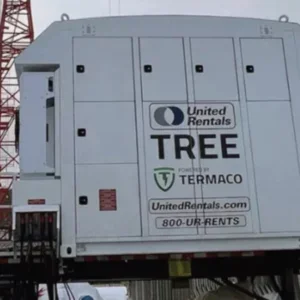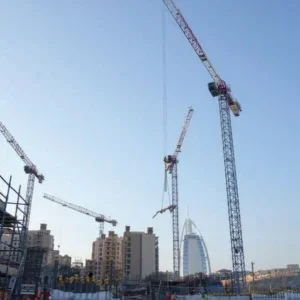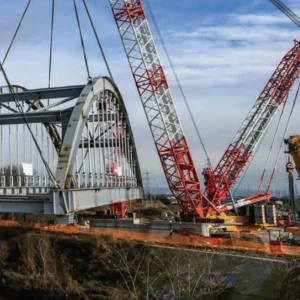Link-Belt has separated its production line for telescopic-boom truck cranes and rough-terrain cranes to increase throughput. It is also in the midst of building a new hang line paint facility for lattice and telescopic boom components.
When the Lexington, Kentucky plant was built in 1975, it was dedicated to the manufacturing of telescopic cranes only. After Sumitomo bought Link-Belt in 1986, all crane production moved to Lexington from other factories. In 1998, the excavator product line moved out with the formation of a new company licensed to use the Link-Belt name, LBX Company LLC, also based in Lexington, Kentucky.
Following the departure of excavators and the evolution of the crane product mix, the factory continually adapted the production lines to enhance throughput. In July, the company completely reorganized the factory assembly lines by providing each crane product group its own dedicated line. At each stage of construction, key sub-assemblies, such as axles, engines, outriggers and hydraulic tanks, are built up next to the main lines.
Splitting the production lines and focusing on specific product groups more than doubles the output, the company says, because each line can proceed at a different pace. Truck cranes tend to have more components and a more complicated carrier than RTs. As a result many assembly tasks differ on the two types of crane, so workers are more efficient when they are focusing only on one product family.
The addition of a 540ft-long new line was developed in a series of periodic week-long Kaizen brainstorming sessions between plant workers and other employees at the 750-employee strong plant. Today there are two completely redesigned, separate assembly lines, each focused on specific telescopic crane model groups.
In 2005, Link-Belt invited independent sheet metal sub-supplier Qualex, to set up operations in a separate building to manufacture fender, hoods, and other fabrications in a totally separate factory environment, on site, so that it would be nearby to assembly requirements.
At Link-Belt’s Cranefest event in 2006, Link-Belt unveiled to customers a newly redesigned lattice boom and telescopic fly manufacturing system that includes an automated “Tray style” lattice material storage and retrieval system in tandem with a USD1m state-of-the-art automated “laser” chord and lattice tube cutting machine.
The USD$25m plant expansion first announced in June 2007 is currently underway. It includes the addition of two full production bays with automated lattice boom handling and painting systems. All of these improvements are forecasted to be online by the end of March 2008.
Link-Belt’s new truck crane manufacturing line Link-Belt’s new truck crane manufacturing line Link-Belt’s automated lattice-chord cutting machine Link-Belt’s automated lattice-chord cutting machine






